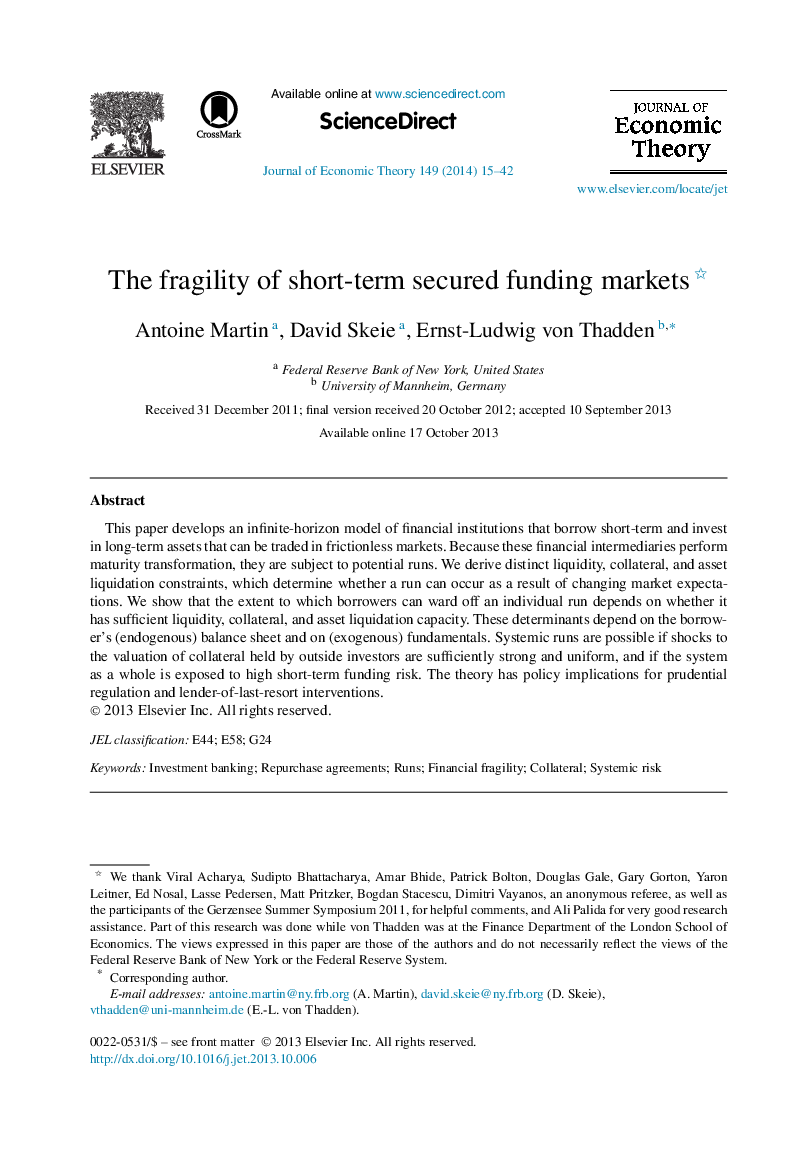| Article ID | Journal | Published Year | Pages | File Type |
|---|---|---|---|---|
| 956710 | Journal of Economic Theory | 2014 | 28 Pages |
This paper develops an infinite-horizon model of financial institutions that borrow short-term and invest in long-term assets that can be traded in frictionless markets. Because these financial intermediaries perform maturity transformation, they are subject to potential runs. We derive distinct liquidity, collateral, and asset liquidation constraints, which determine whether a run can occur as a result of changing market expectations. We show that the extent to which borrowers can ward off an individual run depends on whether it has sufficient liquidity, collateral, and asset liquidation capacity. These determinants depend on the borrowerʼs (endogenous) balance sheet and on (exogenous) fundamentals. Systemic runs are possible if shocks to the valuation of collateral held by outside investors are sufficiently strong and uniform, and if the system as a whole is exposed to high short-term funding risk. The theory has policy implications for prudential regulation and lender-of-last-resort interventions.
